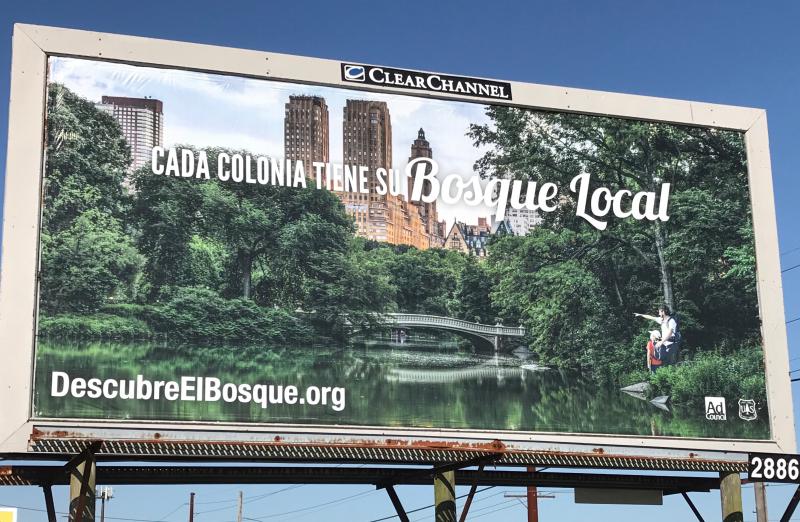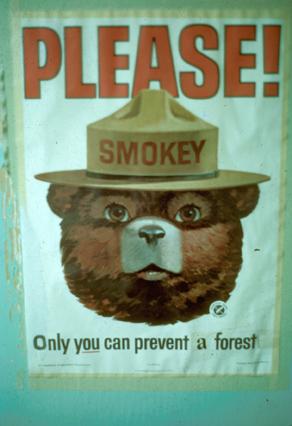Billboard about forests a reminder of nature’s importance
A billboard showed up recently on the outbound side of Savannah Road near Lewes. Its message is written in Spanish and you can see it in the picture I've included here.
Translated into English, the billboard message says: "Each neighborhood has its local forest." It also directs people to a website - descubreelbosque.org - which translates to "Discover the forest."
At the site, I found an English version explaining the intent of the billboard.
"In an effort to motivate Hispanic families to get outside more often and reconnect with nature, the Forest Service and the Ad Council and the U.S. Forest Service have launched the Descubre el Bosque public service advertising campaign, an extension of their popular English-language Discover the Forest campaign started in 2009. The aim of this campaign is to increase Hispanic visits to the nation's forests and grasslands, as well as to help them develop a love of nature and an understanding of their role in protecting it."
I don't recall ever seeing the English version of the campaign in these parts. Maybe there wasn't a public service billboard available.
Regardless, Sussex County has hundreds of thousands of acres of forest in public and private holdings. The forests are havens for birds and other wildlife such as deer, foxes, possums, raccoons, skunks, rabbits and more, which are so prized as part of the county's outdoors culture. The forests are used by hunters and hikers, and they add a tremendous amount to the overall appearance of Sussex County. From almost any roadway in Sussex, there are treelines within view. That's because our flat county is riddled with rivers, streams and creeks, and along those water features are buffers of trees which create that natural and pleasing visual.
The ad campaign on that Savannah Road billboard is designed to encourage discovery and stewardship, and I'm all for that.
The Ad Council, according to an article on Wikipedia, came into being in 1941 as a means of boosting the American war effort. It continued after the war as a nonprofit, public service initiative to promote worthy causes of national scope. The Wikipedia article adds further: "The Ad Council partners with advertising agencies which work pro bono [for free for the common good] to create the public service advertisements on behalf of their campaigns. The organization accepts requests from sponsor institutions for advertising campaigns that focus on particular social issues. To qualify, an issue must be nonpartisan (though not necessarily unbiased) and have national relevance."
The Cape Gazette occasionally receives Ad Council packages with ads for different causes that we publish as space permits.
One of the most famous Ad Council campaigns featured Smokey Bear with messages about preventing forest fires.
Those ads would be just as relevant today as they were when first introduced several decades ago.
Many wildlife stories
Seeing the forest billboard reminded me of how many wildlife stories I've heard recently. One was from a resident of Lewes Beach who told me of a family of coyotes living in the scrub woods and dunes around the dredge spoils area along the Lewes-Rehoboth Canal. He said the big house cat he has as a friend for his Labrador came home recently with serious bite marks. "Wouldn't surprise me at all if he got into a scuffle with one of those coyotes."
Another friend told me of a neighbor who recently found a nest of flying squirrels in a birdhouse. And our golf columnist Fritz Schranck said that on a pontoon outing in Rehoboth Bay a couple of weeks back, his party found themselves surrounded with about 40 porpoises. "I've seen plenty of them in the ocean but never like that in Rehoboth Bay," said Fritz.
About that same time I was bicycling down to Indian River Inlet for breakfast with a group of guys when I saw unusual whitish birds sitting in the branches of dark cedars along one of the guts coming off Rehoboth Bay toward Route 1.
I say whitish because they weren't the bright white of the egrets so plentiful this time of the year or the much larger white herons. On closer look, I realized the birds were about a dozen white ibises, Though we've had lots of glossy ibises in our coastal marshes and hanging out in sheetwater of Sussex fields for the past couple of decades, white ibises - a more southern bird - have just been showing up in the last decade.
As we made our way through Rehoboth and North Shores and into Cape Henlopen State Park, we circled around Gordons Pond. About halfway around, I spotted another small flock of the white ibises. Look for their rapid wing beat and curved bills as positive identifiers.
We're fortunate that in our colonies here in Delaware's Cape Region we have lots of local forests for everyone to enjoy and protect.
























































